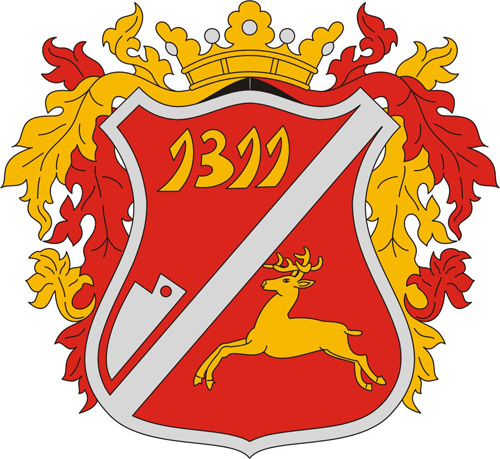
(Heves megye)
Álló, csücsköstalpú tárcsapajzs. Jobbharánt, ezüst pólyával kettéosztott. A pólya szimbolizálja a falu mentén húzódó Tarna, Vízvölgyi és Dudar patakokat. A baloldali vörös mezőben jobbharánt irányban csúcsával lefelé álló ezüstszínű ekevas, amely szimbolizálja a településen élők őstermelői tevékenységét. A jobboldali vörös mezőben aranyszínű ugró szarvas, amely a község 1728-ban készült pecsétjének címerállata. Utal a település egykori bő állatállományára és a nagy erdőterületre. A pajzs fölött háromlombos, kétgyöngyös aranyszínű korona, vörös és aranyszínű takaróval. A korona az Orczy család címerének heraldikai díszeiről átvett szimbólum, amely emlékeztet a települést birtokló Orczyak XVIII. századi adományozó, faluépítő és szépítő tevékenységére.
(The County of Heves)
Spade shield erect, its base is curved to a point. Partitioned dexter sinister with a bend argent. The bend is symbolical of the brooks of Tarna, Vízvölgyi and Dudar, all of which run through the settlement. In sinister field gules a ploughshare argent is borne at a slant, pointing downward. This charge symbolises the agricultural work of the inhabitants of the village. In dexter field gules the charge of a deer or, leaping forward. It is the heraldic beast appearing in the settlement’s seal of 1728. The charge of the deer is a reference to the settlement’s one-time richness in game and also to the densely wooded areas in the vicinity. Above the shield a three-pointed verdured crown, or, decorated with two pearls. Shield is complemented with a mantling on both sides, gules and or. The crown is a symbol, taken over from the coat of arms of the Orczy family. This emblem is a reminder of the fact that the Orczys were the owners of the village in the 18th century and also that the members of this family contributed to the development of the village and with their donations they made Erdőkövesd more beautiful than it had been before.